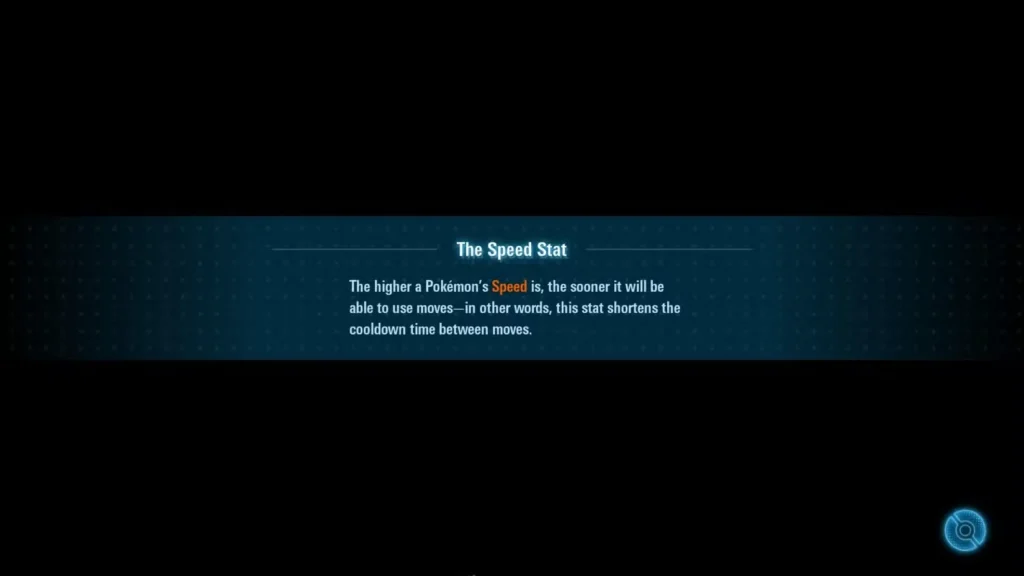
Newsletter Subscribe
Enter your email address below and subscribe to our newsletter

Enter your email address below and subscribe to our newsletter
Your Source for Game News and Guides

Discover how the Speed stat works in Pokemon Legends Z-A's real-time combat system. Learn why this crucial stat functions completely differently than traditional Pokemon games.
What Does Speed Actually Do in Pokemon Legends Z-A?
If you’ve been playing Pokemon games for years, prepare to throw out everything you know about the Speed stat. Pokemon Legends: Z-A introduces a real-time combat system that completely reimagines how Speed functions, and honestly? It’s one of the biggest adjustments veteran players need to make.
In traditional Pokemon games, Speed determines who attacks first in turn-based battles. Simple, right? But in Z-A’s dynamic combat, there are no turns. So Game Freak had to get creative.

Here’s the deal: Speed reduces how long you wait between using moves. The higher your Pokemon’s Speed stat, the faster your attacks come off cooldown after you use them.
Think of it like this—you fire off a Thunderbolt, and there’s a brief window before you can attack again. A Pokemon with high Speed gets back into action faster than a slower Pokemon using the same move.
The official in-game description puts it plainly: “The higher a Pokemon’s Speed is, the sooner it will be able to use moves—in other words, this stat shortens the cooldown time between moves.”
Important note: The cooldown timer you see in the move selection menu doesn’t actually update to reflect your Pokemon’s Speed stat. It shows a base cooldown time, so you won’t see the numbers change as your Speed increases—but trust me, the effect is there.
Community testing using two Espurr at different levels proves this mechanic:
The difference isn’t massive, but it’s measurable and can add up over the course of a battle.
Pro tip: Priority moves like Quick Attack, Bullet Punch, and Extreme Speed have near-instant animations, making them fantastic for aggressive playstyles regardless of your Speed stat.
Short answer: No, and this surprised a lot of players.
Your Pokemon’s Speed stat doesn’t affect how fast they walk, run, or fly around Lumiose City. Movement speed is determined by the Pokemon’s animation type instead.
Here’s where it gets interesting:
A Mega Alakazam with 150 Speed won’t move faster than a Talonflame with 126 Speed when traveling across the map. The Talonflame’s flying animation is just inherently faster than Alakazam’s floating animation.
Exploration tip: Flying-types are your best friends when hunting for Mega Shards on rooftops and elevated areas. Their movement speed combined with vertical mobility makes them essential companions.
Here’s a fascinating twist: Agility doesn’t boost the Speed stat in Z-A. Instead, it temporarily increases your Pokemon’s movement speed in real-time, making their animations faster. It’s essentially a mobility buff rather than a combat stat boost.
Similarly, status conditions work differently:
Check out our status conditions guide for more details on how these mechanics interact.

This is the million-dollar question, and the answer might disappoint Speed-focused players: Speed is the least important stat in Pokemon Legends Z-A.
Without turn-based combat, moving first isn’t the game-changer it used to be. In frantic real-time battles, that 0.1-second cooldown reduction often matters less than:
The meta has shifted heavily toward tanky bruisers that can absorb punishment while dishing out consistent damage. Trick Room teams? Basically irrelevant now.
That said, don’t completely ignore Speed. Certain Pokemon still benefit from Speed investment:
Glass cannon Pokemon benefit most:
These Pokemon can’t become tanks no matter how much you invest in their defenses. You’re better off playing to their strengths—hit hard and hit fast. For them, Speed EV training in the late game still provides value by letting them cycle through attacks more rapidly.
Moveset synergy matters: If your Pokemon uses long-range moves like Thunderbolt and short-range moves like Thunder Fang, they’ll waste time repositioning between attacks. Stick to one range type to maximize efficiency, regardless of Speed.
If you decide Speed is worth it for your team:

Speed is least important here. Focus on type coverage and catching strong early Pokemon to breeze through the main campaign.
Even in competitive play, bulky Pokemon dominate. But if you’re running offensive teams, Speed can give you that slight edge in damage output over time. Check our tier list to see which Pokemon benefit most from Speed investment.
These challenging encounters (like Rogue Mega Dragonite) reward survivability over Speed. Prioritize bulk and type advantage.
The Speed stat’s diminished role in Pokemon Legends Z-A represents one of the game’s most dramatic departures from series tradition. For competitive players who’ve built entire strategies around Speed control, this takes some getting used to.
But honestly? The change makes battles more accessible. New players don’t need to understand Speed tiers, priority brackets, and turn order manipulation. They can focus on type matchups, positioning, and resource management instead.
For returning players, the adjustment period is real. You’ll catch yourself thinking “I need to outspeed this Pokemon” before remembering that’s not really how it works anymore. Give it time, experiment with tankier team compositions, and you might find the new system grows on you.
Key takeaways:
Want to optimize your team further? Check out our guides on special evolutions, Plus Moves, and starter Mega Evolutions to build the perfect team for Z-A’s unique combat system.
For more information on Pokemon Legends Z-A, visit the official Pokemon Legends website or check out the game on the Nintendo Store.
Have you adjusted to the new Speed mechanics? Share your thoughts and team compositions in the comments below!